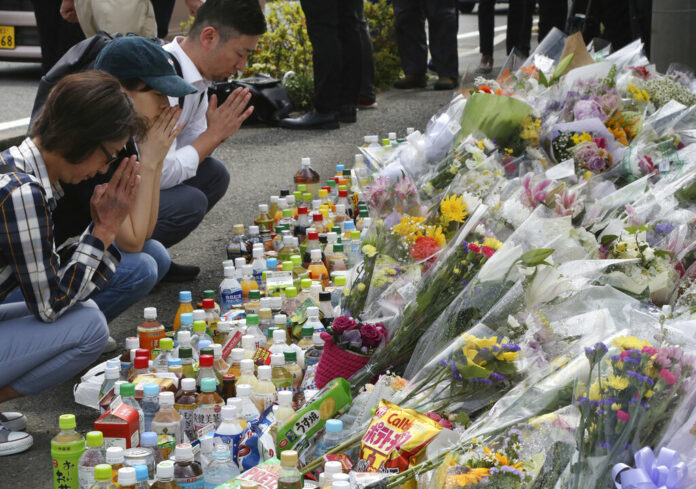
TOKYO — In a country considered among the safest in the world, a deadly knife attack near Tokyo on a group of schoolgirls has shocked Japanese parents and officials and raised concerns over the safety of children.
Authorities say a man brandishing two knives slashed the girls and at least two parents as they gathered at a school bus stop in Kawasaki on Tuesday. An 11-year-old girl and a 39-year-old man were killed before the attacker fatally slashed himself in the neck. At least 17 people, mostly children attending Caritas elementary school, a Catholic private school, were injured.
Many Japanese children walk to neighborhood schools alone or in small groups, and some commute by themselves on trains or buses. Elderly people and volunteers often serve as crossing guards or safety monitors, with little other security.
Mieko Miyata, the head of a nonprofit research institute specializing in children’s safety, said many people in Japan are too complacent about safety because of the low crime rate. Safety officials often focus on responses to disasters rather than on crime prevention, she said.
Children going to school are particularly vulnerable to attacks, she said, because they can be easily located at places such as school bus stops and often wear uniforms.
“Teachers are not anti-crime professionals,” Miyata said. “In addition to neighborhood monitoring and cooperation, there should be concrete anti-crime measures such as professional security guards in uniforms.”
According to education ministry statistics from 2016, 66% of schools had neighborhood safety patrols staffed only by volunteers, and less than 10% hired security guards at school.
Prime Minister Shinzo Abe told police and education officials on Wednesday to reinforce safety measures and patrols to protect schoolchildren across the country. He also asked for more neighborhood watch groups by community volunteers, while urging schools and authorities to share information about suspicious people.
“We must do whatever it takes to protect children’s safety,” Abe said. “I feel extreme regret about the extremely harrowing attack that affected many young children.”
Japan’s government has previously published crime prevention manuals for commuting schoolchildren. Chief Cabinet Secretary Yoshihide Suga said officials are considering seeking out safe locations where children can gather before going to school in groups, either on foot or by bus.
Some schools increased monitoring by teachers after the attack. In Saku City in central Japan, police instructed children to call out for help or use an anti-crime alarm if they see a suspicious person while commuting on a school bus.
At Caritas school, children walk from a train station to a nearby bus stop to take a privately run bus to school, escorted by teachers.
“The school was taking good care of our children for their safety, including the bus driver,” said a father of a student at the school who spoke to reporters on condition of anonymity. “How on Earth can adults fully protect our children?”
Police on Wednesday raided the home of the alleged attacker, 51-year-old Ryuichi Iwasaki, in Kawasaki. Police would not confirm details, but local media said investigators were searching for clues about the motive for the attack.
City officials said Iwasaki lived with his elderly uncle and aunt and may have shunned other people.
While shooting deaths are rare in Japan, the country has had a series of high-profile killings in recent years. In 2016, a former employee at a home for the disabled allegedly killed 19 people and injured more than 20. In 2001, a man forced his way into an elementary school in Osaka, stabbing eight children to death and injuring 15 other people, including teachers.
Story: Mari Yamaguchi















































